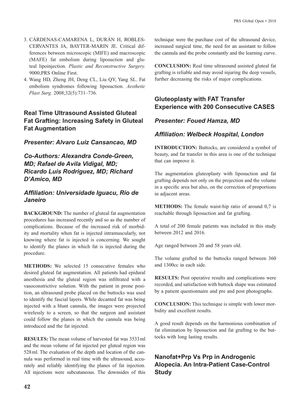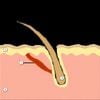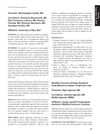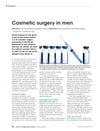Gluteoplasty with Fat Transfer: Experience with 200 Consecutive Cases
September 2018
in “
Plastic and Reconstructive Surgery – Global Open
”

TLDR Ultrasound helps in safe fat transfer for buttock augmentation, but it's costly and time-consuming; the fat transfer technique is effective with high patient satisfaction.
The document presents findings from two separate studies on gluteal fat augmentation and a study on androgenic alopecia. The first study, involving 15 female patients, explored the use of real-time ultrasound during gluteal fat grafting to ensure subcutaneous injection and avoid deep vessel injury. The mean volume of harvested fat was 3533 ml, and the mean volume injected per gluteal region was 528 ml. The study concluded that ultrasound assistance is reliable but noted the downsides of cost, increased surgical time, and the need for an assistant. The second study included 200 female patients aged between 20 and 58 years, who underwent gluteoplasty with fat transfer between 2012 and 2016. The volume grafted ranged from 360 to 1300 cc per side. Patient satisfaction was high, with the technique being described as simple, with low morbidity and excellent, long-lasting results. The document also mentions a study on androgenic alopecia comparing Nanofat+PRP versus PRP treatments, but no details are provided in the summary.





